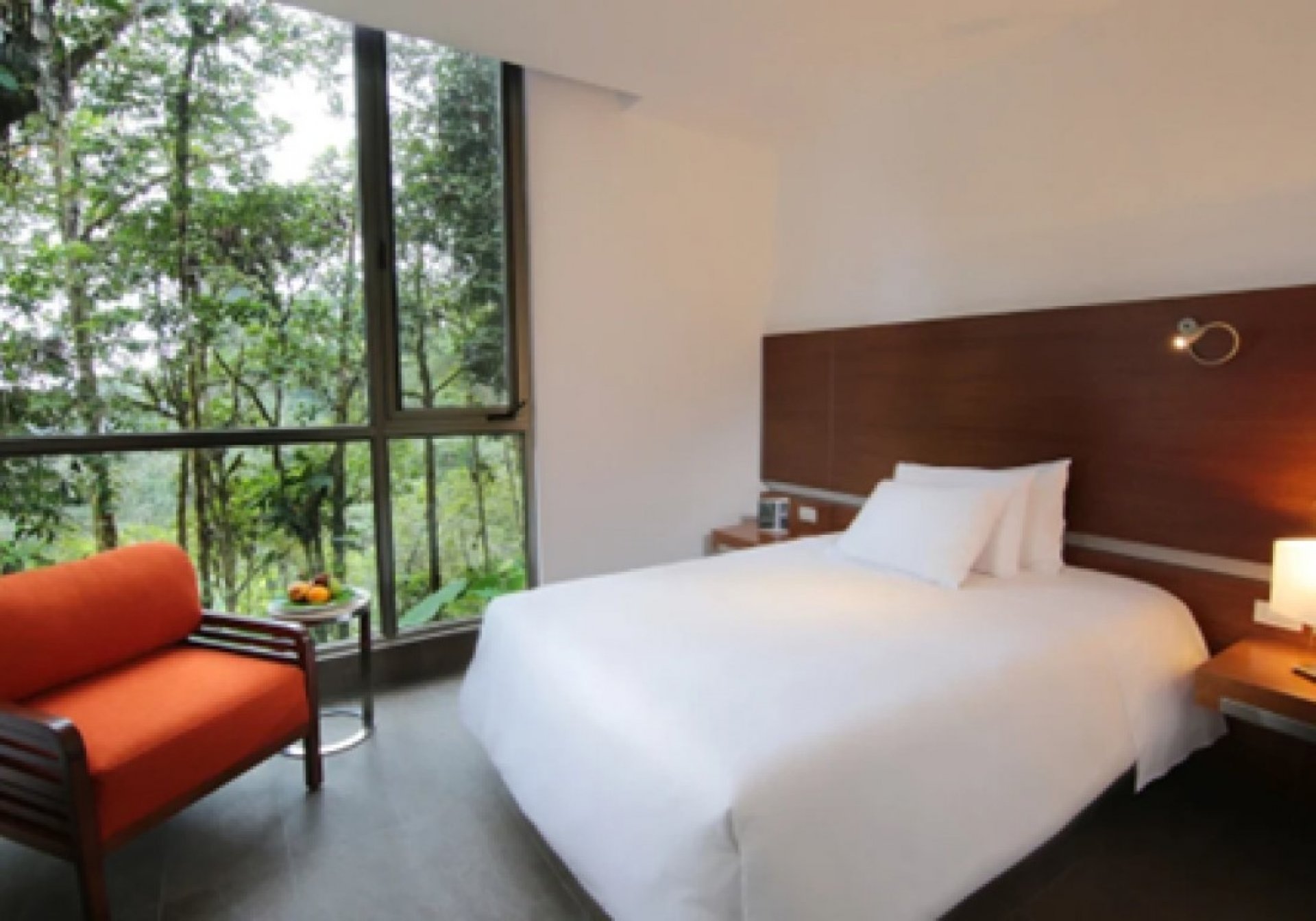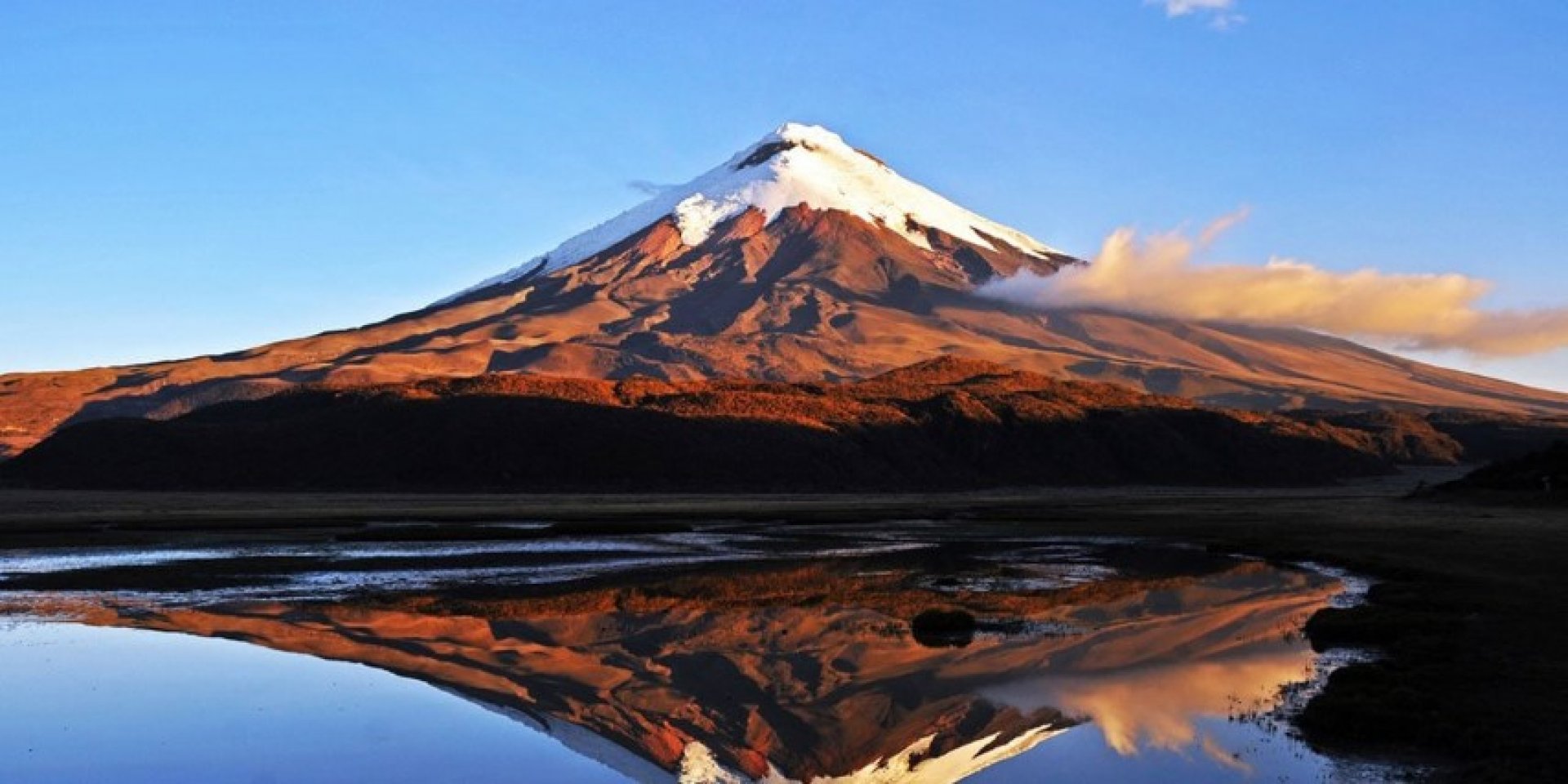Galaxy Diver II
This exclusive yacht will take you to the most incredible dive sites of the Galápagos Islands and will allow you to discover its underwater world, offering a unique experience for diving lovers.

This exclusive yacht will take you to the most incredible dive sites of the Galápagos Islands and will allow you to discover its underwater world, offering a unique experience for diving lovers.

The Wawa room (Wawa is the Kichwa word for “baby”) is ideal for a more intimate and solitary experience and has special rate offers.

With an altitude of 5897 m / 19347 ft, Cotopaxi is the second highest summit in Ecuador and is popular among experienced mountaineers and beginners.

The term

If you're someone who enjoys physical activity and doesn't want to break your exercise routine while traveling through Ecuador, you should try this tour that combines hiking and biking on Chimborazo Volcano (6,268 m).

The lodge's three Yaku Suites (Yaku is a Kichwa word meaning “water”) are perfect for couples seeking a luxurious and intimate experience.
The province of Cotopaxi, located in the heart of the Ecuadorian Andes, is a natural paradise that amazes those seeking to connect with Ecuador's biodiversity. From towering volcanoes to lush páramos and cloud forests, Cotopaxi offers a unique experience for nature lovers. In this blog, we will take you on a journey through the fascinating flora and fauna species you can find in this region, providing all the details you need for your next adventure.
Flora of Cotopaxi: An Andean Garden
Vegetation in Cotopaxi varies according to altitude and ecosystems, ranging from páramo flora to cloud forest plants. Here are some of the most representative species.
1. Polylepis incana (Yagual or Paper Tree)
The yagual is a tree that grows in the highlands of Cotopaxi, especially in the páramos. Its most striking feature is its bark, which peels off in thin layers, like paper. This tree plays an important role in soil and water conservation in these high-altitude ecosystems.
2. Puya hamat
This plant is endemic to the Andes and is often found on the slopes of the Cotopaxi volcano. It belongs to the bromeliad family and is known for its impressive inflorescence, which can reach 2 meters in height.
3. Chuquiraga jussieui (Mountaineer's Flower)
This plant is an icon of the Ecuadorian páramo and is easily recognized by its bright orange flowers. It is known as the "Mountaineer's Flower" because it is common in mountainous areas.
4. Espeletia pycnophylla
Known as frailejón, this plant is typical of the Andean páramos. Its large rosettes and leaves covered with a fine layer of white hairs allow it to survive in cold, windy environments.
Fauna of Cotopaxi: A Wild World to Discover
The fauna in Cotopaxi is as diverse as the flora, and the different altitudes and habitats allow for a great variety of animals to thrive. Here are some of the most notable species.
1. Vicugna vicugna (Vicuña)
· The vicuña is a species of South American camelid that inhabits the high páramos of Cotopaxi. It is smaller than the llama and is famous for its fine, high-quality wool.
· Altitude: 3,500 to 5,000 meters.
· Fun fact: During the Inca Empire, hunting them was forbidden, and only nobility could wear their wool.
2. Puma concolor (Puma)
The puma is one of the largest predators in the Andes. This feline is extremely adaptable and can be found in a variety of ecosystems, from páramos to cloud forests.
3. Oreotrochilus chimborazo (Chimborazo Hillstar)
This brightly colored hummingbird is one of the species that inhabit the highlands of Cotopaxi. It feeds mainly on the nectar of plants such as Chuquiraga jussieui.
4. Hippocamelus antisensis (Andean Deer or Taruca)
This deer is another emblematic species of the Cotopaxi páramos. It is shy and moves in small groups, feeding on páramo vegetation.
5. Lama glama (Llama)
The llama, domesticated by the indigenous Andean peoples, is common in the province of Cotopaxi. These animals are used as pack animals but are also valued for their wool and meat.
An Ecosystem in Balance
The Cotopaxi ecosystem is a delicate balance between flora, fauna, and the extreme environmental conditions of the Andes. These high-altitude landscapes are essential for water regulation in the region, and the species that inhabit them are perfectly adapted to these unique conditions. Moreover, many of these species are endemic, meaning they cannot be found anywhere else in the world.
The province of Cotopaxi, located in the heart of the Ecuadorian Andes, is a natural paradise that amazes those seeking to connect with Ecuador's biodiversity. From towering volcanoes to lush páramos and cloud forests, Cotopaxi offers a unique experience for nature lovers.